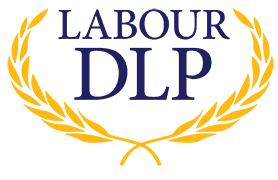
The Democratic Labour Party (DLP), formerly the Democratic Labor Party, is an Australian political party. It broke off from the Australian Labor Party (ALP) as a result of the 1955 ALP split, originally under the name Australian Labor Party (Anti-Communist), and was renamed the Democratic Labor Party in 1957. In 1962, the Queensland Labor Party, a breakaway party of the Queensland branch of the Australian Labor Party, became the Queensland branch of the DLP.

Sir George Houston Reid was an Australian politician, diplomat and barrister who served as the fourth prime minister of Australia, from 1904 to 1905, holding office as the leader of the Free Trade Party. He previously served as the 12th Premier of New South Wales from 1894 to 1899, and later the High Commissioner to the United Kingdom of Australia from 1910 to 1916.
Politics of the Australian state of Victoria takes place in the context of a constitutional monarchy with a bicameral parliamentary system, and like other Australian states, Victoria is part of the federation known as the Commonwealth of Australia.
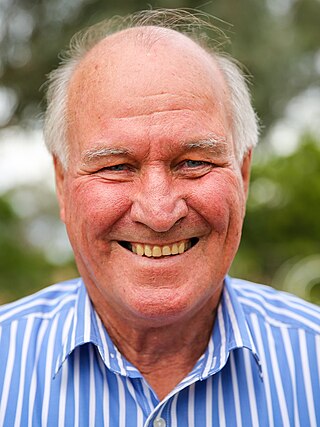
Antony Harold Curties Windsor, is a former Australian politician. Windsor was an independent member for the New South Wales Legislative Assembly seat of Tamworth from 1991 to 2001 − supporting the incumbent Greiner Liberal/National Coalition minority government at the 1991 election.
The Liberal Party was a parliamentary party in Australian federal politics between 1909 and 1917. The party was founded under Alfred Deakin's leadership as a merger of the Protectionist Party and Anti-Socialist Party, an event known as the Fusion.

Nicholas Frank Hugo Greiner is an Australian politician who served as the 37th Premier of New South Wales from 1988 to 1992. Greiner was Leader of the New South Wales Division of the Liberal Party from 1983 to 1992 and Leader of the Opposition from 1983 to 1988. Greiner had served as the Federal President of the Liberal Party of Australia from 2017 to 2020. He is the current Consul-General in the United States of America, New York.

John Cain was an Australian politician, who became the 34th premier of Victoria, and was the first Labor Party leader to win a majority in the Victorian Legislative Assembly. He is the only premier of Victoria to date whose son has also served as premier.

John (Jack) Murray, Australian politician, was the 23rd premier of Victoria.

Sir Albert Arthur Dunstan, KCMG was an Australian politician who served as the 33rd premier of Victoria from 1935 to 1945, and previously as the 3rd deputy premier of Victoria for five days in March 1935. A member of the Country Party, now the National Party, his term as premier was the second-longest in the state's history and the longest of any third-party premier. He was the first person to hold the office of premier in its own right, and not an additional duty taken up by the Treasurer, Attorney-General or Chief Secretary.

Thomas Tuke Hollway was the 36th Premier of Victoria, and the first to be born in the 20th century. He held office from 1947 to 1950, and again for a short period in 1952. He was originally a member and the leader of the United Australia Party (UAP) in Victoria, and was the inaugural leader of the UAP's successor, the Victorian division of the Liberal Party, but split from the Liberals after a dispute over electoral reform issues.

The 1944 New South Wales state election was held on 27 May 1944. It was conducted in single member constituencies with compulsory preferential voting and was held on boundaries created at a 1940 redistribution. The election was for all of the 90 seats in the Legislative Assembly.

The 1956 New South Wales state election was held on 3 March 1956. It was conducted in single member constituencies with compulsory preferential voting and was held on boundaries created at a 1952 redistribution. The election was for all of the 94 seats in the Legislative Assembly.
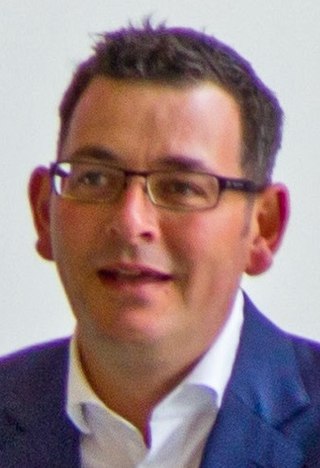
The 2014 Victorian state election, held on Saturday, 29 November 2014, was for the 58th Parliament of Victoria. All 88 seats in the Victorian Legislative Assembly and 40 seats in the Victorian Legislative Council were up for election. The incumbent centre-right Coalition minority government, led by Liberal Party leader and Premier Denis Napthine and National Party leader and Deputy Premier Peter Ryan, was defeated by the centre-left Labor Party opposition, led by Daniel Andrews. The Greens won two lower house seats, their first Legislative Assembly seats in a Victorian state election, whilst increasing their share of upper house seats. The new Andrews Ministry was sworn in on 4 December 2014.
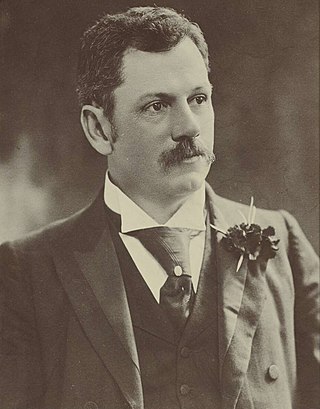
The Carruthers ministry was the 32nd ministry of the New South Wales Government, and was led by the 16th Premier, Joseph Carruthers. The title of Premier was widely used to refer to the Leader of Government, but was not a formal position in the government until 1920. Instead the Premier was appointed to another portfolio, usually Colonial Secretary. In this case, Carruthers chose the portfolio of Treasurer.
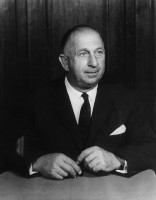
The 1955 Victorian state election was held in the Australian State of Victoria on Saturday, 28 May 1955 to elect 65 members of the state's Legislative Assembly.
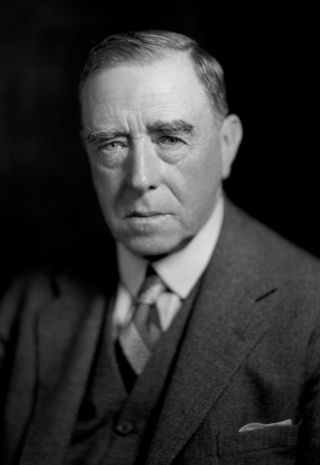
The 1932 Victorian state election was held in the Australian state of Victoria on Saturday 14 May 1932 to elect 44 of the 65 members of the state's Legislative Assembly. The other 21 seats were uncontested.

The 1914 Victorian state election was held in the Australian state of Victoria on Thursday, 26 November 1914 to elect 49 of the 65 members of the state's Legislative Assembly.

The 1907 Victorian state election was held in the Australian state of Victoria on Friday, 15 March 1907 to elect 45 of the 65 members of the state's Legislative Assembly. The other 20 seats were uncontested.
The Victorian Labor Party, officially known as the Australian Labor Party and commonly referred to simply as Victorian Labor, is the Victorian state branch of the Australian Labor Party (ALP). The branch is currently the ruling parting in the state of Victoria and is led by Jacinta Allan, who has served concurrently as premier of Victoria since 2023.
The Liberal Party, often known simply as the Liberals, was the name used by a number of political groupings and parties in the Victorian Parliament from the late 19th century until around 1917.


















